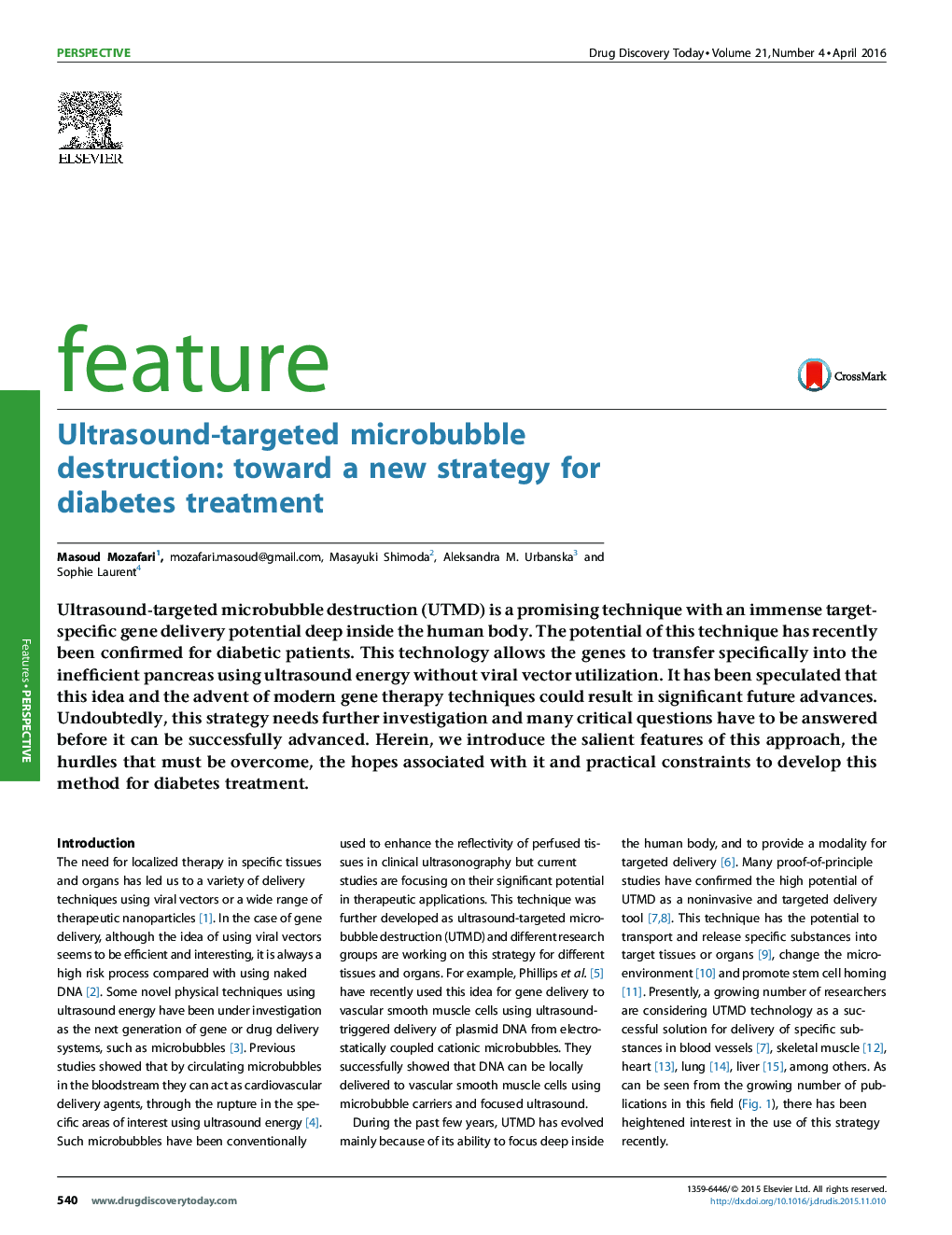| Article ID | Journal | Published Year | Pages | File Type |
|---|---|---|---|---|
| 2079877 | Drug Discovery Today | 2016 | 4 Pages |
•UTMD offers a unique mechanism for gene delivery owing to the use of lipid-shelled microbubbles.•UTMD allows the genes to transfer into the inefficient pancreas without viral vector utilization.•UTMD enables not only islet regeneration but also normalization of blood sugar, insulin and C-peptide.
Ultrasound-targeted microbubble destruction (UTMD) is a promising technique with an immense target-specific gene delivery potential deep inside the human body. The potential of this technique has recently been confirmed for diabetic patients. This technology allows the genes to transfer specifically into the inefficient pancreas using ultrasound energy without viral vector utilization. It has been speculated that this idea and the advent of modern gene therapy techniques could result in significant future advances. Undoubtedly, this strategy needs further investigation and many critical questions have to be answered before it can be successfully advanced. Herein, we introduce the salient features of this approach, the hurdles that must be overcome, the hopes associated with it and practical constraints to develop this method for diabetes treatment.
Graphical abstractFigure optionsDownload full-size imageDownload high-quality image (322 K)Download as PowerPoint slide
